A lot can happen over coffee and dinner, but not if you have poor table manners! Yes, you get judged even at the dining table, whether you are meeting someone at a cafe, attending a sit-down dinner party at a friend’s home, or dining at a fancy restaurant. So, knowing proper etiquette is important to make a good impression.
1. Seating Arrangement
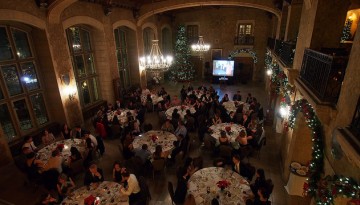
Always wait for your host to guide you to your seat; he/she may already have seating arrangements in mind. If you are the host, keep in mind to guide the guests to their seats. The guest of honor will always be seated to the host’s right and the second most important guest to the host’s left.
2. Posture
Sit upright; do not slouch. Remember not to place your elbows on the table. Keep them by your side so that you don’t elbow the person sitting next to you.
3. Napkin
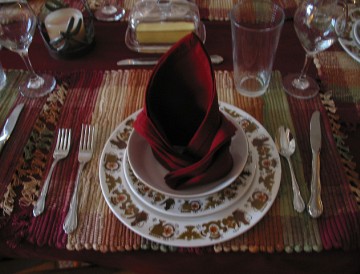
Unfold the napkin and place it on your lap as soon as you are seated. Large napkins should be unfolded halfway and small ones should be unfolded completely. Use the napkin occasionally to pat your lips or the sides of the mouth. Remember not to make a scene out of wiping your mouth with the napkin. Also, don’t even think about blowing your nose into the napkin. Excuse yourself from the table and go to the restroom if you do feel like blowing your nose. When you get up from the table temporarily, leave the napkin on your chair. At the end of the meal, loosely fold your napkin and place it to the left of the plate in front of you. If there is no plate at the center of the place setting, it is appropriate to lay the napkin in the center.
4. Before you begin eating
At a formal sit-down dinner, each course will be brought to you and placed to your left. At a casual dinner, however, the food may be served by the host, or it may be passed around for the guests to help themselves.
Before picking up the cutlery and digging into your meal, make sure everyone else has been served. Wait for the cue from the host before you begin eating. Traditionally, the host has the first bite after all the guests are seated and all the food is served.
5. While eating
Try to make as little noise as possible while cutting up and later chewing your food. Also, keep your mouth closed while chewing. Although it is advised to take active part in the dinner conversation, remember not to speak with food in your mouth. Swallow, take a sip of your drink if need be, and then proceed with what you have to say.
6. Place setting
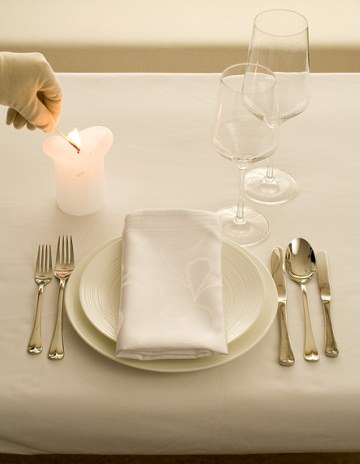
The food is usually placed to the left of your plate and the drinks to your right. There’s a trick to remembering where the forks and spoons should go. Fork has four letters. So does the word left. So, it goes to your left. Similarly, spoon and knife have five letters each, just like the word right. So, they go on your right. The dessert spoon and fork are usually placed at the top of your plate.
Another question that plagues many of us is how best to remember where the utensils are placed and the specific function of each fork, spoon and glass. Each course has its own utensils. Every piece of silver from the entrée fork to the dessert spoon may be placed in front of you when you are seated, or they may arrive as each course is served.
The universal rule is to start using the cutlery from the outside and working your way inwards as the meal progresses. If a salad is served to you first, start with the fork farthest from the left side of your plate. The knife and fork closest to your dinner plate should be used for eating the main course.
7. Handling food and utensils
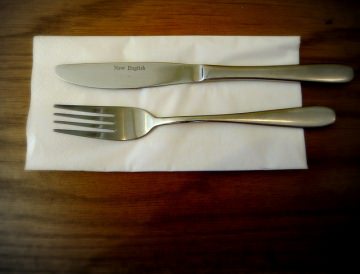
The continental style is usually followed both during formal and informal dinners. This would involve holding the fork in the left hand with the tines facing down, and the knife in the right hand with your index finger resting on the blunt side of the blade. Cut the food with the knife and spear it with the fork to bring it to your mouth. Cut the food into bite-size pieces. Remember not to cut it all up at one go. Also, do not lick the knife or put it in your mouth. If the knife isn’t needed, it can remain on the table. Remember to bring the food up to where your mouth is, instead of leaning down to your plate. Even if you find it difficult to load food onto your fork or spoon, refrain from using your fingers to push the food onto the cutlery. It is also impolite to use the utensils to point or gesture at somebody or something.
8. When the food is hot
No matter how hot your food is, when served, do not blow on it. Wait for it to cool down before attempting to eat it.
9. Before adding seasoning

Always taste your food before adding seasoning to it. The host or the cook could easily be offended otherwise.
10. Bread
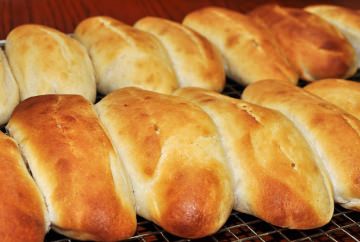
When the basket of bread or rolls is passed to you, take only one. Never cut up bread with the knife. Instead, break it using your hands. Butter the pieces one bite at a time before placing them into your mouth with your hand.
11. Soup
When a soup of any sort is served, remember to scoop it away from you. Transfer it to your mouth from the side of the soup spoon and not from the end of it. Never lift or tilt the soup bowl or make scraping noises as your spoon hits the bottom of the bowl.
12. Beverage

Always hold a stemmed glass by its stem. After taking a sip of your beverage, don’t keep the glass, or any piece of the stemware, back in the lineup. Instead, keep it next to your dinner plate.
13. While pausing
When you want to pause, either between mouthfuls or to be part of a conversation, place the knife over the fork making an inverted ‘V’ at the center of your plate. The tip of the fork should face the tip of the knife.
14. Passing dishes
If the dish you want is out of your reach, politely ask for it to be passed to you. Salt and pepper should always be passed together. Use the serving utensils to transfer the food onto your plate. Do not lean across the table or reach across another person’s plate. Likewise, if you hear somebody else making a request to have a dish passed to them, reach for it only if you are closest to it. Take the dish and place it beside the person sitting next to you, and he/she will keep passing it like that, till it reaches the person who asked for it. Keep in mind not to load your plate along the way; request for the bowl to be passed back to you once they have served themselves.
15. When you are finished
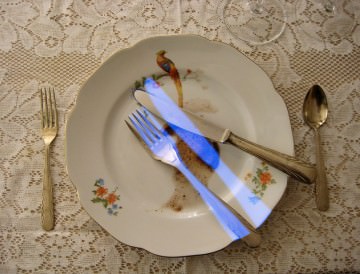
When you have finished, keep the knife and fork side by side on the table. Remember that the tines of the fork should face upwards.
If you accidentally burp or hiccup, excuse yourself quietly without calling much attention to it. It is okay to make mistakes; people tend to be understanding about it. But remember that calling another person out on inappropriate etiquette is more wrongful than mistaking the dinner fork for the salad fork.
Editor’s note:
So, there you have it. Remember, practice makes perfect. Re-visit these tips as needed to become more polished in your personal and professional interactions. For other tips on good grooming, you may want to check out:
Featured image courtesy of aleungfung








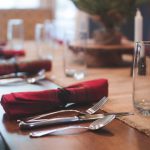

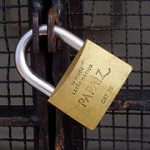
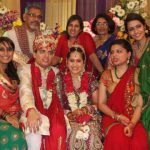



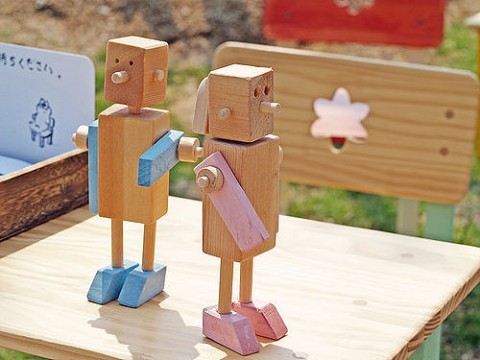








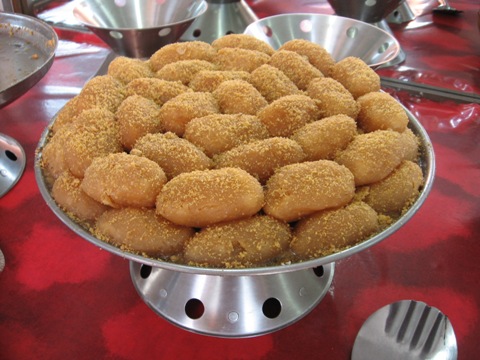






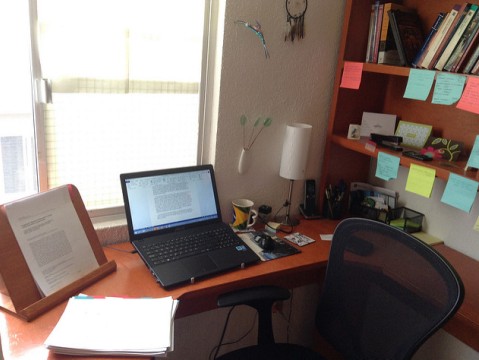






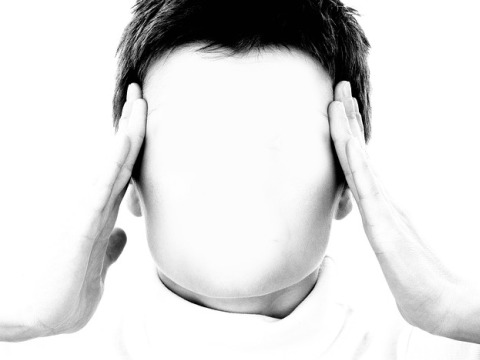


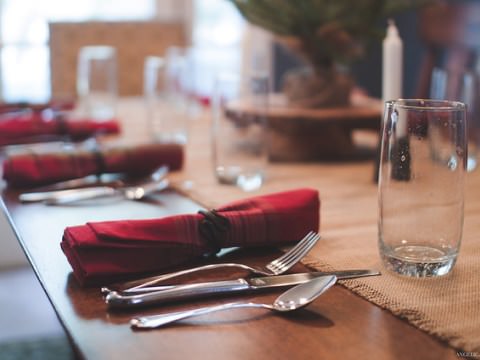







[…] about where you’re meeting. If he chooses a fancy restaurant, refresh your lessons on dining etiquette. Who wouldn’t want to appear […]
[…] Whether you are dining at a cafe or fancy restaurant, you will be expected to follow proper dining etiquette. For tips, read: Table Manners: Dos And Don’ts. […]
[…] is a blanket term for being polite and well-groomed and following etiquette. There’s a lot that goes into this, including but not restricted to personal hygiene, dress […]